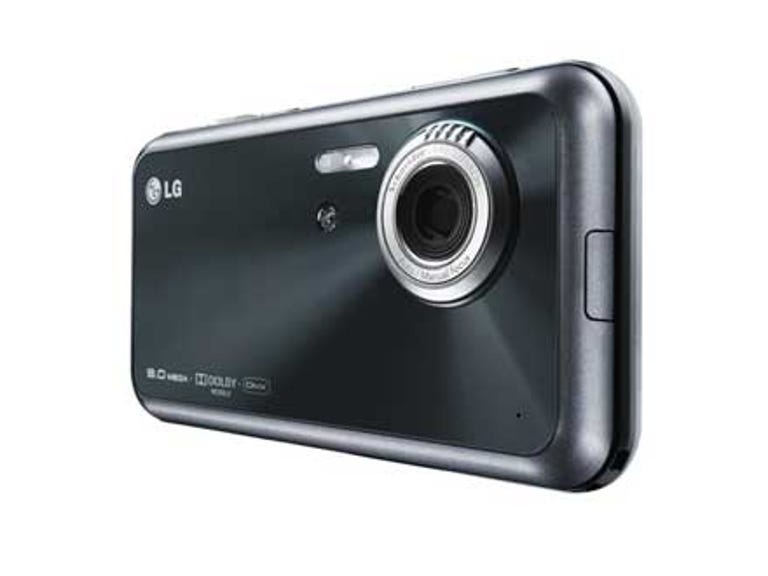 Why You Can Trust CNET
Why You Can Trust CNET LG Renoir KC910 review: LG Renoir KC910
With an excellent 8-megapixel camera and a finger-friendly touchscreen, the Renoir is exactly what it sets out to be: one of the best camera phones of the year.
At the beginning of this year we pitted four 5-megapixel cameras against one another in our camera phone showdown. During this we noted that the LG Viewty was one of the weaker performers in this group; it struggled to focus sharply and the Xenon flash robbed the pictures of natural colour, casting a blue light over the subjects. When we heard about the 8-megapixel Renoir we had our reservations. Would it simply take larger poor quality photos? The results have been surprising.
The Good
The Bad
The Bottom Line
Design
Named, we assume, after the French impressionist, this latest touchscreen from LG is slick and sturdy, but a bit utilitarian in its design to be called a work of art. Its body is formed mostly from plastic with curved reflective metal edges. The centre piece is a 3-inch 240x400-pixel resolution touchscreen display, which we've found sharp and colourful and extremely easy to use.
Above the screen we find a front-facing camera for video calls and below the display are three soft-keys for calling and accessing application shortcuts. Along the right-side edge of the Renoir are four keys, a volume rocker, a dedicated camera key and a handset lock.
The underside of the phone houses the Schneider-Kreuznach camera lens and LED flash. We were glad to see the camera has a lens cover, activated by a switch where you might expect to find a focus ring around the lens.
The Renoir uses a proprietary LG platform, very similar to the interface we saw on the Viewty last year. The Renoir is extremely touch-friendly, the whole interface is designed with fingers in mind.
Features
You're going to need to be sitting for this one: the Renoir features an 8-megapixel (MP) camera. By this time next year 8MP shooters may be eye-rollingly passè, but considering this is the first we've had the opportunity to review we've been tremendously eager to put it to the test.

The camera software for the Renoir features an extensive range of settings and modes, similar to the Viewty and what you'd expect to find on stand-alone point-and-shoot cameras. There's the obligatory auto-focus, but this is matched with face and blink detection, macro shooting mode, digital image stabilisation and adjustable image sensitivity.
The Renoir is also capable of shooting video at 120 frames per second, effectively creating videos which play back at four-times slow motion. While this looks great written on a spec sheet, this is a feature we are still struggling to find a place for in our lives — YouTube quality videos of our friends are arduous to watch at a normal speed, let alone in extreme slow motion.
The Renoir also makes quite a handy portable media player supporting MP3 and AAC music formats and MP4, DivX and XviD video formats. The only let-down here is no 3.5mm headphone port for plugging in your favourite headphones, although, the Renoir does include a 3.5mm headphone adaptor and supports TV-out for viewing your massive photos on the big screen. With all this fantastic media capability it's a shame the Renoir doesn't have sizeable internal memory like several of its main competitors.
Performance
LG has taken a significant step forward with the Renoir. The Schneider-Kreuznach optics have improved since the Viewty to a point where we have managed to take some rather exciting photos. As with most mobile phone cameras, the Renoir works best under optimal conditions: bright, natural sunlight. However, we did have some success taking pictures with the Xenon flash in dark rooms with less than perfect lighting, though only when our subjects were within a metre of the flash.
Testing the macro focus feature, we took photos that replicated a depth-of-field quite well, which is often difficult to achieve with a fixed focus camera phone lens. When reviewing our images we saw good, natural colour reproduction when the flash didn't fire and very little artefacting. Our photos taken in darker environments did appear slightly grainy, probably due to the software automatically adjusting the image sensitivity, and subjects further than a metre from the flash were cast with a deathly blue hue.
In line with our experience with the camera, operating the Renoir has been a pleasure. Similar to our experience with the iPhone 3G, the Renoir is a phone we can't leave sitting on the desk for long without wanting to pick it up and play with it again. The menus and all major interfaces, like contacts lists and the photo gallery, are excellently designed for use with your fingers; all the buttons are large enough to make it almost impossible to miss your target.
Messaging is similarly easy, the Renoir features a T9-style numeric input in portrait mode, and a full-size QWERTY keyboard in landscape mode, with a built-in accelerometer rotating the screen depending on how you choose to hold the handset. Using the numeric pad, we found the "send" key to be too close to the space bar, meaning we sent a few text messages to friends by mistake before we had completed the message.
We also liked the Renoir's web browser. Web pages rendered quickly and looked fantastic; the browser word-wraps the content to fit the screen, and pictures looked sharp and clear. The browser's incremental zoom function isn't top notch, the controls are a bit finicky to use, but we found that most of the time the browser displayed pages exactly as we'd want them without us having to adjust the size.
Our only significant concern is the quality of calling. The sound of voices through the internal speaker were uniformly muffled and slightly distorted. The people we spoke to during our tests commented on hearing something similar at their end.
Battery life is about average for a handset with a display of this size. With light to moderate use we managed two days between charges, and found we had to charge the battery at the end of a full afternoon using the camera. We also noticed the battery warming considerably during long calls, making it uncomfortable to hold against the face.
Overall
There's loads to love about the LG Renoir. The 8-megapixel camera is a winner and the touchscreen interface is one of the best — a close second to the iPhone, in our opinion. Without a 3.5mm headphone port on the handset or substantial internal storage, it's hard to recommend the Renoir for music lovers and it's definitely not a phone for business people, but then it's not pretending to be. The Renoir does exactly what it sets out to do and stands out as one of our favourite camera phones of the year.


